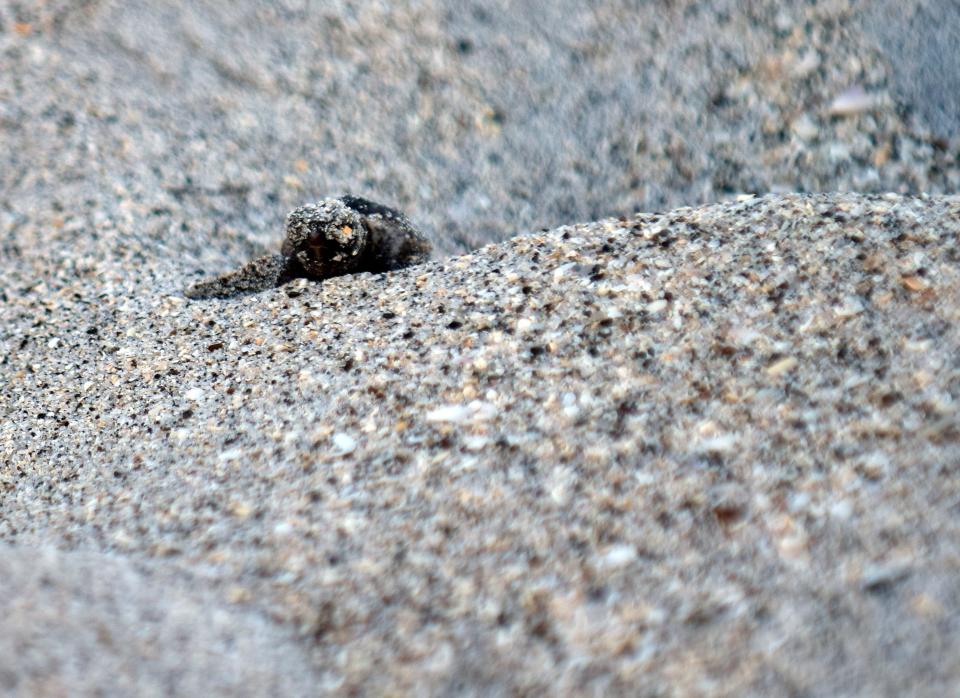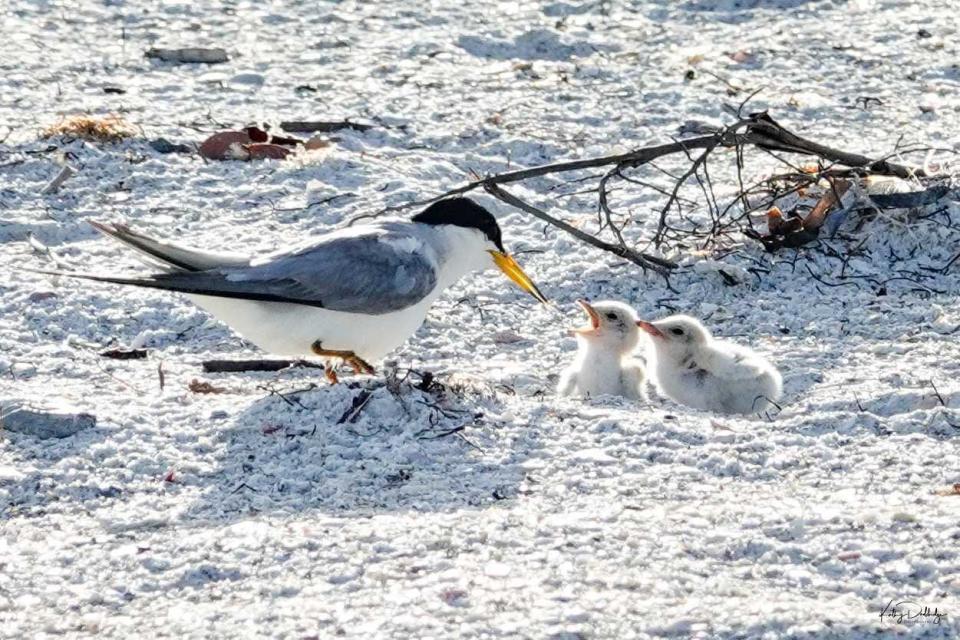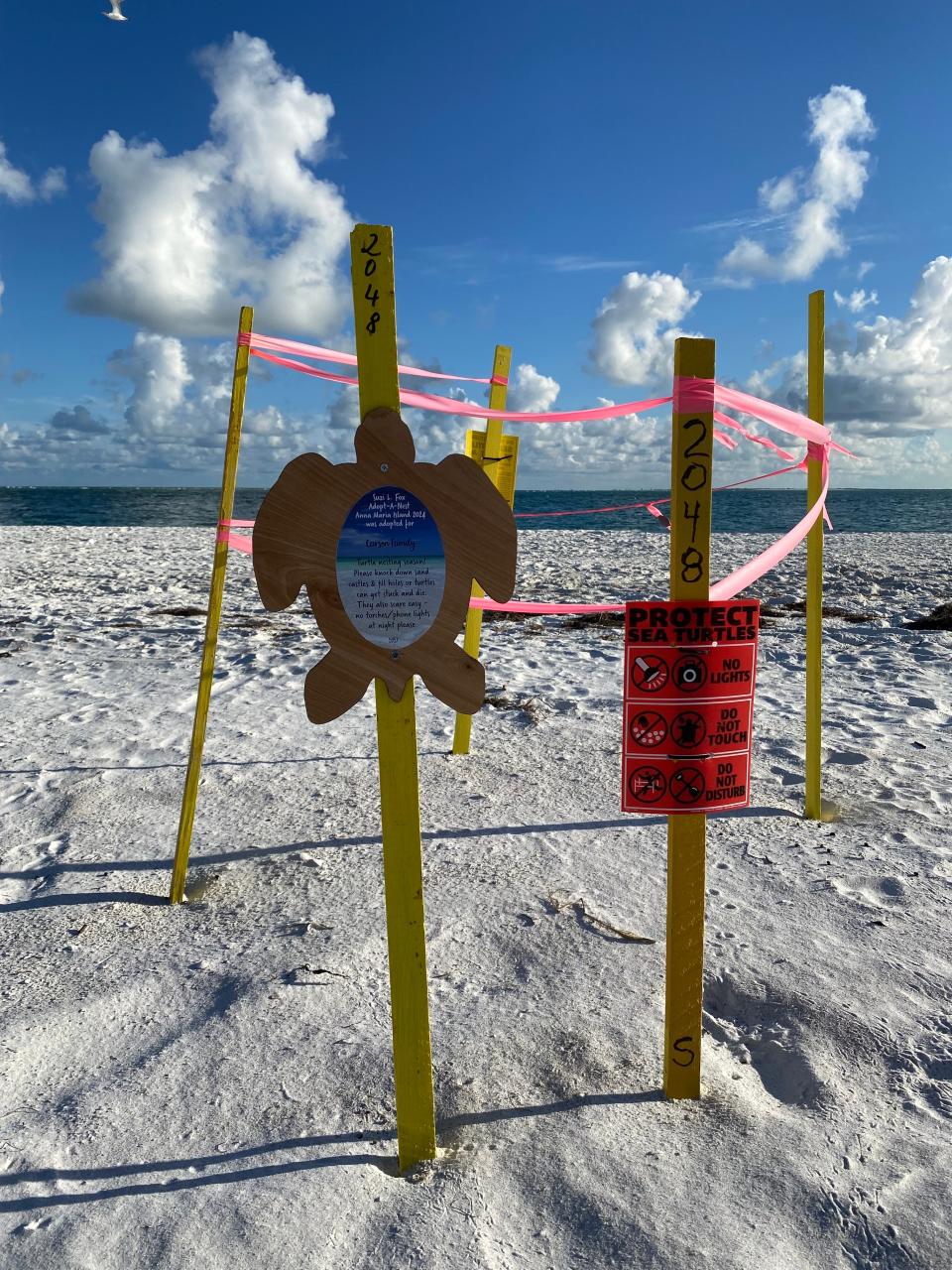A new record! Sea turtle nests continue to pop up on Anna Maria Island
A record number of Loggerhead Sea Turtle nests have been recorded on Anna Maria Island this year, and there is still time left in the season for more.
The Anna Maria Island Turtle Watch & Shorebird Monitoring group is reporting that 654 nests have been documented on the island as of Tuesday, well over the previous annual record of 543 in 2019.
"Turtles generally nest between April through the end of August, so we have several more weeks left this season to add to that number," AMI Turtle Watch Director Kristen Mazzarella said. "We do think that it has to do with conservation efforts of volunteers from about 25 years ago because the turtles that are coming here this year as brand new turtles nesting are just becoming adults."
More sea turtles: First sea turtle nest of season in Sarasota County found on Venice Beach
Also: Mote: Idalia doesn't stop a record number of sea turtle nests on Sarasota area beaches
What types of Sea Turtles nest on Anna Maria Island?
All nests identified this year have been laid by Loggerhead Sea Turtles. It is the predominant species that nests on Anna Maria Island, although some years Green Sea Turtle nests can also be found.
"Loggerheads are about 200- to 300-pound sea turtles, they have a huge head, and they are generally a brown to an orange color, possibly with some yellow," Mazzarella said. "Most of the Loggerhead Sea Turtles in the world were born here in Florida."
What happens when hatchlings leave the nest?

Hatchlings leave the nest after about two months of incubation, and follow the light out toward the gulf waters.
More: Mote’s Sea Turtle Protection Zone initiative urging boaters to ‘Go Slow for Those Below’
"Generally, hatchlings will emerge at night," Mazzarella said. "That's the time of day when there are fewer predators, and they are camouflaged by the cover of night. They generally emerge all together, so when everybody is ready they leave the nest. They should be heading toward the brightest horizon and away from dark shadows. So on the beach with dunes and trees in the background, they are going away from that and toward the bright night sky glowing above the water."
Are there any shorebirds nesting this year?

Volunteers have identified a colony of Least Terns nesting in Bradenton Beach, and a total of 22 nests have been spotted since May. Stakes and signs have been placed around the colony to notify visitors of their presence and to create a protective buffer. Several chicks have also been banded to help researchers understand the bird's demographics, behavior and habitat.
"They are small seabirds, they are the smallest of the terns," Mazzarella said. "They are nesting right now. We still have two pairs that are on eggs and we have ten chicks. A couple of our chicks have fledged, which means they have learned how to fly. They typically go from hatched to flying in about 3 weeks, so they grow really fast."
What does the Sea Turtle Watch do?

The AMI Sea Turtle Watch works to address common problems, including issues with artificial lighting that can disorient hatchlings, finding and marking new nests, educating visitors, and cooperating with local code enforcement to address any issues that arise.
"We have about 30 volunteers, usually 6 to 8 or as many as 10 of them go out each day," Mazzarella said. "We start on April 15 and go until the last nest hatches, usually that is the end of October but sometimes it's November. We go out every morning, we check for new crawl, we mark off new nests, we document everything that we see, we check every one of the nests that has already been marked, and right now we are also inventorying the nests that have hatched."
Members also make weekly educational presentations for the public on Tuesdays from 10 a.m. to 11 p.m. at the Holmes Beach City Hall.
How do volunteers find new sea turtle nests?
Visitors can easily spot sea turtle nests that have been marked by AMI Sea Turtle Watch with wooden stakes and pink ribbon. However, to find those nests volunteers comb the beach every morning to find tracks from the female sea turtle that crawled up the beach to lay her eggs.
"We walk along the waterline and look for tracks from the mother sea turtle," Mazzarella said. "We should see a track coming in and a track heading back out. They look like big tractor tire tracks coming out of the water, so they are hard to miss when you know what you are looking for. We will follow the track up the beach and we determine whether or not she laid a nest. Then we will post the nest off."
Tips that make the beach safe for nesting sea turtles and hatchlings
Volunteers ask residents and visitors to respect posted sea turtle nests, remove all beach furniture and trash, knock down sand castles and fill in any holes in the sand to ensure the safety of adult and hatchling sea turtles.
"We also recommend people don't go on the beach at night, or that you have no lights on whatsoever," Mazzarella said. "If you have to use a flashlight, use a red LED and shine it directly down in front of you rather than up and down the beach. Sea turtles use the light as cues, so any light can make them go the wrong direction."
Anybody who sees sea turtles in distress or witnesses anybody tampering with nests is encouraged to call the AMI Sea Turtle Watch 24-hour hotline at 941-301-8434. Incidents can also be reported to local law enforcement by calling 911, and the Florida Fish and Wildlife Conservation at 888-404-3922.
This article originally appeared on Sarasota Herald-Tribune: A record number of sea turtle nests identified on Anna Maria Island

